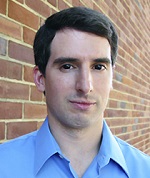Quantum Integrated Photonics
Hosted By: Integrated Photonics Technical Group
28 July 2020 13:00 - 14:00
Eastern Time (US & Canada) (UTC -05:00)Integrated photonics is emerging as a powerful tool for quantum information processing. By generating and processing quantum light on a chip, integrated quantum processors can implement a vast array of quantum tasks. But achieving the complexity and efficiency required for practical applications remains a foremost challenge of the field.
In this webinar hosted by the OSA Integrated Photonics Technical Group, Edo Waks from the University of Maryland will discuss the challenges and opportunities in this emerging field. Waks will describe the individual components of quantum integrated photonic devices, which include quantum light sources, complex photonic circuits, low photon-number nonlinearities, and quantum memories. Waks will present various hybrid fabrication strategies that enable integration of all of these components on a compact chip, providing a potential path towards scalable systems. Finally, the webinar will conclude by describing various opportunities to leverage this emerging technology in a broad range of applications including quantum networking, simulation of computationally intractable quantum dynamics, scalable quantum computing, and quantum metrology.
What You Will Learn:
- An overview of integrated quantum photonics, which is a rapidly emerging topic and
- Recent developments in the field and experiment work on the subject
Who Should Attend:
- Material will be appropriate for various levels of expertise
About the Presenter: Edo Waks, University of Maryland, College Park
 Edo Waks is a professor in the Department of Electrical and Computer Engineering at the University of Maryland, College Park. He is also a member of the Joint Quantum Institute (JQI), a collaborative effort between the University of Maryland and NIST, Gaithersburg, dedicated to the study of quantum coherence. Waks received his B.S. and M.S. from Johns Hopkins University, and his Ph.D. from Stanford University. He is a recipient of a Presidential Early Career Award for Scientists and Engineers (PECASE), an NSF CAREER award, and ARO Young Investigator Award, and is a fellow of the Optical Society (OSA) and the American Physical Society (APS). His current work focuses coherent control and manipulation semiconductor quantum dots, and their interactions with photonic crystal devices for creating strong atom-photon interactions.
Edo Waks is a professor in the Department of Electrical and Computer Engineering at the University of Maryland, College Park. He is also a member of the Joint Quantum Institute (JQI), a collaborative effort between the University of Maryland and NIST, Gaithersburg, dedicated to the study of quantum coherence. Waks received his B.S. and M.S. from Johns Hopkins University, and his Ph.D. from Stanford University. He is a recipient of a Presidential Early Career Award for Scientists and Engineers (PECASE), an NSF CAREER award, and ARO Young Investigator Award, and is a fellow of the Optical Society (OSA) and the American Physical Society (APS). His current work focuses coherent control and manipulation semiconductor quantum dots, and their interactions with photonic crystal devices for creating strong atom-photon interactions.
